 W
WJohn Basilone was a United States Marine Corps Gunnery Sergeant who received the Medal of Honor for heroism above and beyond the call of duty during the Battle for Henderson Field in the Guadalcanal Campaign, and the Navy Cross posthumously for extraordinary heroism during the Battle of Iwo Jima. He was the only enlisted Marine to receive both of these decorations in World War II.
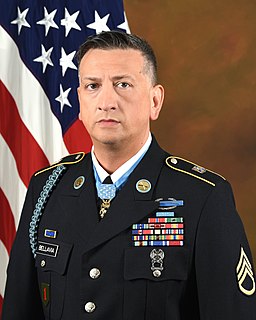 W
WDavid Gregory Bellavia is a former United States Army soldier who was awarded the Medal of Honor for his actions during the Second Battle of Fallujah. Bellavia has also received the Bronze Star Medal, two Army Commendation Medals, two Army Achievement Medals and the New York State Conspicuous Service Cross. In 2005, Bellavia was inducted into the New York Veterans' Hall of Fame. He has subsequently been involved with politics in Western New York State. Upon being awarded the Medal of Honor on June 25, 2019, Bellavia became the first, and currently only living recipient of the Medal of Honor for service during the Iraq War.
 W
WDaniel Davidson Bidwell was a civic leader in Buffalo, New York, before the outbreak of the American Civil War. He enlisted early in the war and then was appointed colonel of a regiment of infantry. He was promoted to general in command of a brigade in early 1864, leading it until he was mortally wounded at the Battle of Cedar Creek.
 W
WMason Brayman was an American attorney, newspaperman, and military officer. During his service to the Union Army during the American Civil War, he rose to the rank of Major general with the 29th IL. Volunteer Infantry. Later in life, he became the seventh Governor of the Idaho Territory.
 W
WEdward Payson Chapin was an American lawyer and soldier. He served in the Union Army during the American Civil War, and was wounded twice, both times occurring on May 27. Chapin was killed in action fighting in Louisiana, and after his death was promoted to brigadier general.
 W
WWilliam Joseph "Wild Bill" Donovan was an American soldier, lawyer, intelligence officer and diplomat, best known for serving as the head of the Office of Strategic Services (OSS), the precursor to the Central Intelligence Agency, during World War II. He is regarded as the founding father of the CIA, and a statue of him stands in the lobby of the CIA headquarters building in Langley, Virginia.
 W
WJohn McCreath Farquhar was a United States Representative from New York and a recipient of the United States military's highest decoration, the Medal of Honor.
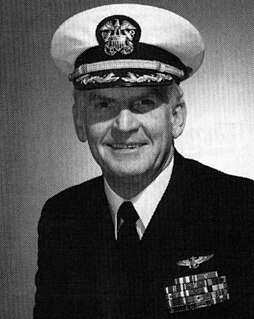 W
WJohn Heaphy "Jack" Fellowes was a U.S. Navy captain, pilot, and prisoner of war (POW) during the Vietnam War. He was known as "Happy Jack" because of his infectious sense of humor, which he maintained even while a POW. He was awarded the Silver Star for his "conspicuous gallantry and intrepidity" while a POW, credited with "contributed significantly toward the eventual abandonment of harsh treatment by the North Vietnamese".
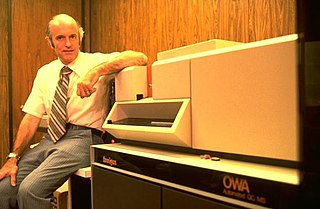 W
WRobert Emmet Finnigan is an American pioneer in the development of gas chromatography–mass spectrometry equipment (GC/MS). Finnigan founded the Scientific Instruments Division of Electronic Associates, Inc., producing the first commercial quadrupole mass spectrometer in 1964. He then formed Finnigan Instruments Corporation to combine a computer system with a quadrupole mass spectrometer and gas chromatograph. Finnigan's GC/MS/computer systems are used to detect and identify trace organic compounds, making them important instruments for the monitoring and protection of the environment. They were adopted by the United States Environmental Protection Agency as a standard instrument for monitoring water quality and were fundamental to the work of the EPA.
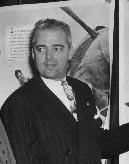 W
WHerbert O. Fisher was an American test pilot and an aviation executive, overseeing aviation projects at the Port Authority of New York and New Jersey. He worked for the Curtiss-Wright Corporation. Fisher flew as a pilot for over 50 years, racking up 19,351 accident and violation free hours.
 W
WJoseph John Franklin was a United States Marine who received the Medal of Honor during the Spanish–American War.
 W
WFrank Joseph Gaffney was a soldier in the United States Army who received the Medal of Honor for his actions during World War I. He was considered "the second bravest man in the U. S. Army."
 W
WAnson Conger Goodyear was an American manufacturer, businessman, author, and philanthropist and member of the Goodyear family. He is best known as one of the founding members and first president of the Museum of Modern Art in New York.
 W
WBrigadier General Anna Mae Violet McCabe (Ret.) was an American military officer who served as the 13th chief of the U.S. Army Nurse Corps. She was the first woman in the U.S. Armed Forces to be promoted to a General Officer rank; in 1970, she was promoted to the rank of Brigadier General. Hays paved the way for equal treatment of women, countering occupational sexism, and made a number of recommendations, which were accepted into military policy.
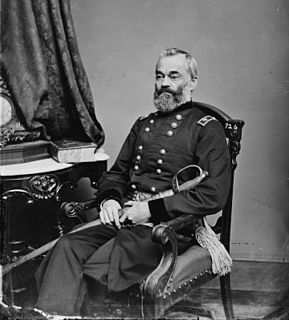 W
WSamuel Peter Heintzelman was a United States Army general. He served in the Seminole War, the Mexican–American War, the Yuma War and the Cortina Troubles. During the American Civil War he was a prominent figure in the early months of the war rising to the command of a corps.
 W
WWilliam Benjamin Kean was a general in the United States Army.
 W
WChester A. Kowal was an American politician, a basketball player, a boxer and a World War II veteran. From 1962 to 1965 he was mayor of Buffalo, New York; he is the last Republican mayor of that city to date.
 W
WGary Alcide Lee was a Republican member of the United States House of Representatives from New York.
 W
WStanley M. "Stan" Makowski was Mayor of the City of Buffalo, New York, serving 1974–1977. He was born in Buffalo on April 22, 1923, as the younger of two children of Polish immigrants. He dropped out of Hutchinson Central High School and served six months with the Civilian Conservation Corps. In 1943, he joined the Army and served three years during World War II, including an eight-month tour on Iwo Jima. After the war, he earned his high school diploma and attended Cornell University, where he received a certificate from the New York State School of Industrial and Labor Relations, and night school at Millard Fillmore College at the University of Buffalo. He married Florence Ziolo on August 7, 1954.
 W
WRear Admiral Clarence Wade McClusky, Jr., was a United States Navy aviator during World War II and the early Cold War period. He is credited with playing a major part in the Battle of Midway. In the words of Admiral Chester Nimitz, McClusky's decision to continue the search for the enemy and his judgment as to where the enemy might be found, "decided the fate of our carrier task force and our forces at Midway".
 W
WMajor General Carroll W. McColpin (1914–2003) was a United States Air Force officer who served during World War II, and during the Cold War. Prior to the United States entry into World War II, in November 1940, he volunteered for duty with the Royal Air Force and was commissioned a pilot officer in the RAF before transferring to the United States Army Air Forces in the grade of major, at London, England, in September 1942.
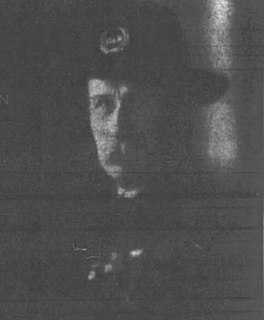 W
WJohn Harrison Mills was born and died in western New York state, United States. He was raised on a farm but was on to start his art career into Buffalo, New York, just as the American Civil War came on, which he barely survived, advanced his writing and art career including with the rising Mark Twain, extended it further while living in Colorado published in national magazines with his growing family and his art was sold as well as kept in collections like at the Colorado Springs Pioneers Museum and advanced the success of the business of art. Then back to New York where he again organized the business of art and then back to Buffalo where he continued his art and added to the Albright Gallery collection, as it was known then, and casting bronze works. As he settled into his last decade still producing art which was collected he also began to advocate for and established the first Baháʼí Faith community of Buffalo, and was able to host ʻAbdu'l-Bahá, then head of the religion, during his journeys to the West in 1912 and Mills 50th anniversary recovering from the war, several other Baháʼís, and continued on in all these endeavors of art and religion onto his unexpected death a little after his 50th wedding anniversary.
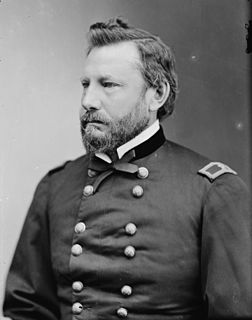 W
WAlbert James Myer was a surgeon and United States Army general. He is known as the father of the U.S. Army Signal Corps, as its first chief signal officer just prior to the American Civil War, the inventor of wig-wag signaling , and also as the father of the U.S. Weather Bureau.
 W
WInnis Newton Palmer was a career officer in the United States Army, serving in the Mexican–American War, the Civil War, and on the Western frontier.
 W
WPeter Buell Porter was an American lawyer, soldier and politician who served as United States Secretary of War from 1828 to 1829.
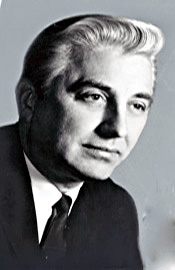 W
WRoman Conrad Pucinski was an American Democratic politician from Chicago, Illinois. He was a U.S. Representative from 1959 to 1973 and alderman from the 41st Ward of Chicago from 1973 to 1991. He was considered a longtime leader of Chicago Polonia and was seen to represent its interests in Washington along with Congressman Dan Rostenkowski.
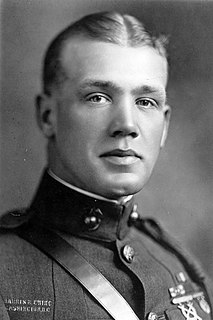 W
WHarold Cyrus Roberts was a highly decorated officer in the United States Marine Corps with the rank of colonel. He was the recipient of three Navy Crosses, the United States military's second-highest decoration awarded for valor in combat.
 W
WSamuel F. Rogers was a United States Navy Quartermaster received the Medal of Honor for actions during the Korean Expedition. He was awarded the medal for his rescue of the mortally wounded Lieutenant Hugh McKee.
 W
WEdwin John Roland, was a United States Coast Guard admiral and served as the twelfth Commandant of the Coast Guard from 1962 to 1966. During his tenure, Roland oversaw the replacement of many World War II era cutters under fleet modernization programs. He also assisted the U.S. Navy with operations in Vietnam by supplying crews and cutters for Operation Market Time. Roland was noted for his support in efforts to bring international safety standards to merchant shipping. Although Roland was already retired when the service was transferred from the Department of Treasury to the newly formed Department of Transportation in 1967, he was largely responsible for the advance planning for the move and the Coast Guard retaining its military responsibilities along with its transportation related functions.
 W
WGeneral Clark Louis Ruffner was a senior officer in the United States Army who served in World War II and the Korean War.
 W
WWilliam Dodge Sample was a Rear Admiral in the United States Navy and an Escort Carrier Division commander in World War II. He was the youngest rear admiral in the Pacific Theater of World War II.
 W
WRichard Giles Stilwell was a United States Army general who served as Commander United States Forces Korea from 1973 to 1976, and acting Commander of the U.S. Army Pacific from September to December 1974. He was not closely related to General Joseph W. Stilwell.
 W
WJames Clark Strong was a breveted American Civil War general and prominent New York attorney in the post-war period. An advocate for Native Americans, he litigated That Portion of the Cayuga Indians Residing in Canada v. State and Seneca Nation of Indians v. Christy on behalf of the Cayuga and Seneca, respectively, two of the earliest litigations of aboriginal title in New York.
 W
WMatt Louis Urban was a United States Army lieutenant colonel and one of the most decorated American soldiers of World War II. Urban performed valiantly in combat on many occasions despite being wounded in action several times. He received over a dozen personal decorations for combat from the U.S. Army, including seven Purple Hearts. In 1980, he received the Medal of Honor and three other U.S. decorations and one foreign decoration for his actions in France and Belgium in 1944.
 W
WWilliam Orton Williams, called Orton Williams until he changed his name to Lawrence Williams Orton, was a Confederate officer who, after having been caught behind Union lines in a U.S. Army uniform, was executed as a spy.
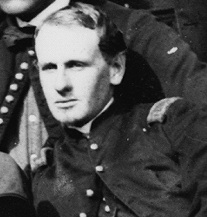 W
WCarle Augustus Woodruff, was a career soldier in the United States Army who rose to the rank of brigadier general. He received the Medal of Honor while serving as an artillery officer in the Union Army during the American Civil War.